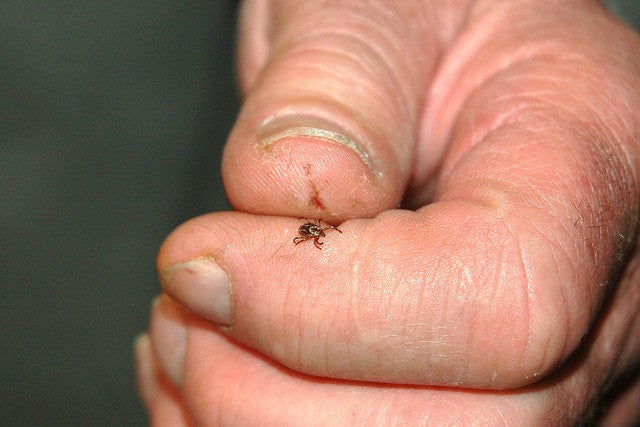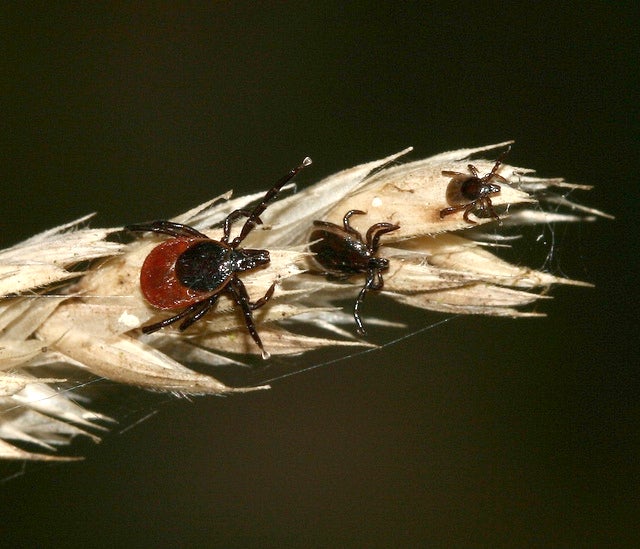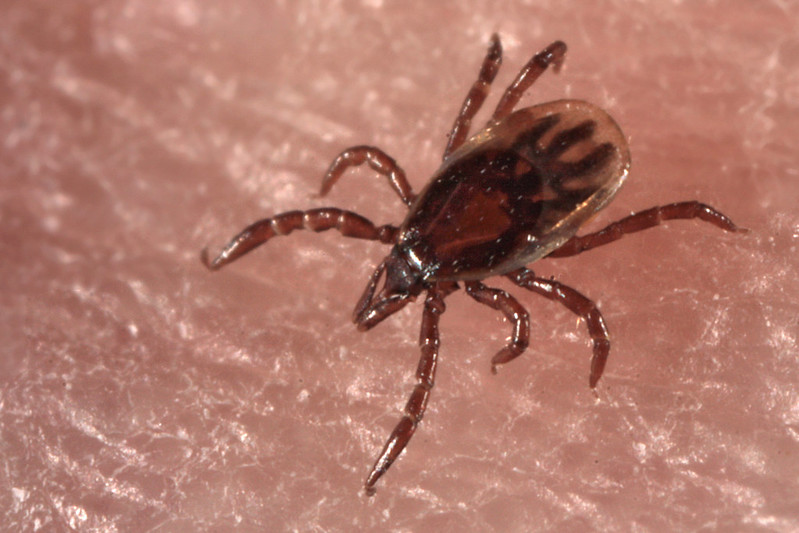State and federal researchers are studying deer ticks in Eau Claire County to learn more about their behavior and to find how likely they are to make people sick.
Eau Claire County is a hotspot for deer ticks and tick-borne disease. According to the Centers for Disease Control and Prevention (CDC), more cases of Lyme disease have been confirmed in Eau Claire County than anywhere else in the state.
Shane Sanderson, the county Environmental Health Director, said that unfortunately, Lyme disease is so common that people have become complacent about it. He hopes that will change
Stay informed on the latest news
Sign up for WPR’s email newsletter.
“This is a big deal here,” he said. “This is the second most common reportable illness each year in our county.”
Sanderson, along with University of Wisconsin-Madison, the state Department of Health Services and the CDC are working to collect deer ticks at two busy county parks. The ticks will be ground up and tested to see how many have the bacteria responsible for Lyme disease.
“The real goal right now is to get a better understanding of how do weather patterns change collection or exposure, what are some of those exposure rates — what is out there essentially,” said Sanderson.
Sanderson said understanding what percentage of ticks are infected and when they’re more likely to search for hosts will help officials mitigate the danger to residents.
“Hopefully we can gather that kind of information and then make recommendations to either county parks or other things — to spray at certain times of the year, or treat or do whatever we need to do to get those populations down.”
So far, Sanderson said, roughly 25 percent of the ticks they’ve collected tested positive for the bacteria that cause Lyme disease. Researchers hope to sample at least 300 ticks this year.
The study is expected to continue until 2017.
Wisconsin Public Radio, © Copyright 2024, Board of Regents of the University of Wisconsin System and Wisconsin Educational Communications Board.





